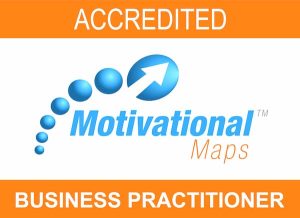This is the time of year when most of us, our teams and our orgamisations are busy trying to wrap things up so we can start the new year afresh. But how do we get the best out of teams, how do teams step in for each other, particularly when the pressure of a major deadline is looming?
I reflected on instances where I had witnessed the call to other team members or teams for help, and all that was heard were crickets. We would all like to think we would respond to the plea of assistance, but what would mobilise a whole team to step in? How do we build a foundation in a team that is based on cooperation?
We all know that building an environment where people have each other’s back, believe in what they are doing, share their knowledge and pull in the same direction is critical to the success of teams and organisations. Building Cooperative Capability, lays a foundation for such an environment by identifying and strengthening productive working relationships in teams.
If you have read Stephen Covey’s 7 Habits of Highly Effective People you would recall the first three habits were based on self and the following four were focused on interactions with others.
Using the Motivational Maps tool, I have seen well over 1000 individuals gain a greater understanding of self in the workplace and how those motivational drivers that are specific to them play out in a team environment.
If you think about the best job you ever had or may have now, the chances are those motivational drivers that are important to you were in play and you thrived in that working environment. One senior manager in a workshop recently shared that his best job was delivering pizza whilst at University. You may be smiling now as you think about that great job you once had.
But how do we get the best out of
Motivational Maps helps lay our foundation of self-awareness. Team Motivational Maps makes us aware of how we and others work in teams. The team data provides an opportunity for team members to gain a new perspective and appreciation of each other‘s strengths. Identifying common drivers and potential sources of tension will help us reframe our assumptions of colleagues and grow team trust. Understanding the perspective of others in the team gives effect to Covey’s Habit 5 “Seek first to understand, then to be understood”
And what happens next...
We build cooperation when we endeavour to understand the perspective of others in the team. We cooperate when we realise our value to achieving the end goal. Teams cooperate when they understand where their strengths lay and deploy as a unit to achieve the objective.
Team Motivational Maps provide the common language, but it is the conversation between people in the team, their reflections, their insights and their individual motivations that lay the ground work for building Cooperative Capability.
Reflecting back on the years’ worth of individuals and teams I have mapped, I noticed that in almost all instances, the Searcher motivator was in the top three. As the name suggests the Searcher searches for meaning, making a difference, being purposeful and useful.
The Searcher motivator can unite teams, drive them to work cooperatively and to make a difference in the space they are held responsible. Even if this not the case for your team or your organisation, the chances are that there is a common motivator that allows you to connect and collaborate to achieve an outcome that is more than the sum of your individual contributions and that is the goal of Cooperative Capability.
Marie Ball has a Masters in Human Resource Management, is an adjunct lecturer at CSU, specialising in working with teams using Motivational Maps to build Cooperative Capability

Phone: (+61) 401 295 118
Email: admin@marieballconsulting.co
Based In Australia, Assisting Globally 📍
